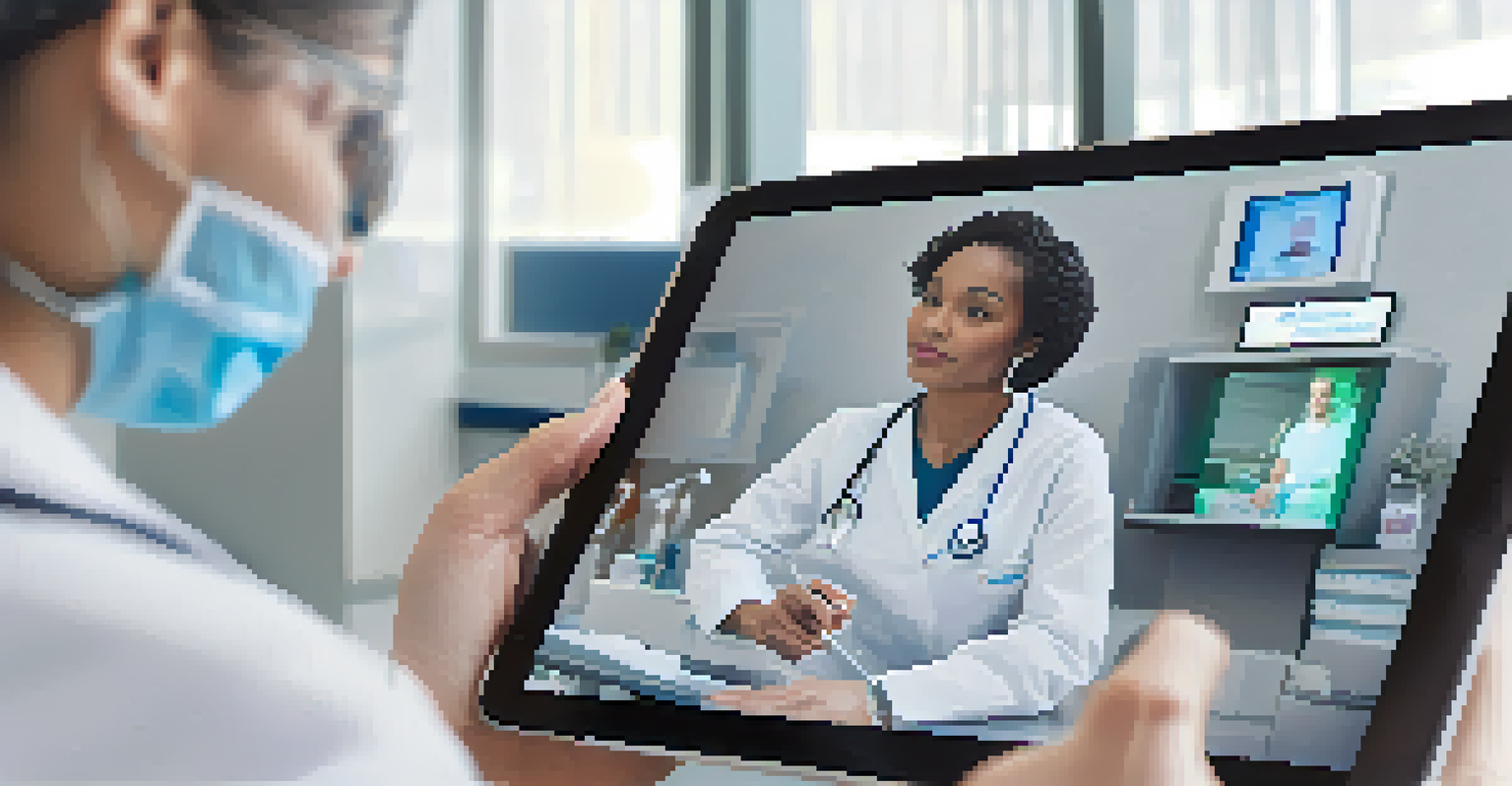The Role of Telemedicine in Enhancing City Healthcare Access

Understanding Telemedicine and Its Importance
Telemedicine refers to the use of technology to provide healthcare services remotely. It allows patients to consult with healthcare providers without the need for in-person visits. This approach has gained significant traction, especially in urban areas where time and convenience are essential.
Telemedicine is a tool that can help bridge the gap between healthcare providers and patients, especially in underserved communities.
The importance of telemedicine lies in its ability to bridge gaps in healthcare access. For many city residents, busy schedules and long commute times can hinder regular medical visits. Telemedicine provides a solution, making it easier for individuals to receive care when they need it most.
Moreover, telemedicine can be a game-changer for those with mobility issues or chronic conditions. By utilizing virtual appointments, patients can manage their health effectively from the comfort of their homes, improving their quality of life.
Increased Access to Specialists in Urban Areas
One of the key benefits of telemedicine is its ability to connect patients with specialists. In large cities, while there may be many healthcare providers, accessing a specialist can still be challenging due to wait times and geographical barriers. Telemedicine breaks down these barriers, allowing patients to consult with experts regardless of their location.

For instance, a patient in a bustling metropolis may need to see a cardiologist located miles away. With telemedicine, they can have a video consultation without the hassle of travel. This not only saves time but also ensures timely interventions for critical health issues.
Telemedicine Enhances Healthcare Access
Telemedicine bridges gaps in healthcare access, allowing patients to receive care remotely and conveniently.
Additionally, urban areas often have diverse populations with varying healthcare needs. Telemedicine can cater to these needs by providing access to specialists who may not be available locally, ultimately leading to better health outcomes for all.
Reducing Healthcare Disparities in Cities
Healthcare disparities can be pronounced in urban settings, where socioeconomic factors often dictate access to medical services. Telemedicine offers a potential solution by making healthcare more accessible to marginalized communities. With just a smartphone or computer, individuals can access necessary care without the stigma associated with visiting a clinic.
The future of healthcare lies in technology, and telemedicine is paving the way for more accessible and efficient patient care.
Moreover, telemedicine can help in bridging the gap for underinsured or uninsured populations. Many platforms offer reduced-cost services or can connect patients with financial assistance programs, ensuring that more people receive the care they need.
By providing equal access to healthcare resources, telemedicine can play a pivotal role in reducing health disparities, fostering a healthier urban population overall.
Enhancing Emergency Care Response Times
In emergency situations, every second counts, and telemedicine can enhance response times significantly. For instance, virtual triage can help determine the urgency of a patient's condition before they even arrive at a hospital. This ensures that medical teams are prepared and can act swiftly upon the patient's arrival.
Furthermore, telemedicine can facilitate immediate consultations between emergency responders and specialists. This collaboration can be vital in critical situations, such as when a paramedic needs guidance on how to manage a patient’s condition en route to the hospital.
Reducing Urban Healthcare Disparities
By offering accessible services, telemedicine helps to reduce healthcare disparities among marginalized urban populations.
Ultimately, by integrating telemedicine into emergency care, cities can improve overall patient outcomes and potentially save lives.
Cost-Effectiveness of Telemedicine for Patients
Cost is often a significant barrier to healthcare access, especially in urban areas where living expenses are high. Telemedicine can help reduce costs for patients by eliminating travel expenses and time lost from work. This makes it a more affordable option for many seeking medical care.
Additionally, telemedicine can reduce healthcare system costs. Fewer in-person visits can lead to lower overhead for healthcare providers, which can be passed on to patients in the form of reduced fees. This creates a win-win situation for both parties.
As telemedicine continues to evolve, its cost-effectiveness will likely attract more patients, further enhancing access to essential healthcare services.
Improving Patient Engagement and Compliance
Telemedicine not only makes healthcare more accessible but also encourages greater patient engagement. With easy access to healthcare providers, patients are more likely to participate in their health management. This proactive approach can lead to better health outcomes and increased patient satisfaction.
Moreover, telemedicine platforms often include features like reminders for appointments and medication refills. These tools help patients stay on track with their health plans, improving overall compliance and adherence to medical advice.
Improving Emergency Care Response
Telemedicine improves emergency care by facilitating quick assessments and consultations, potentially saving lives.
As a result, telemedicine empowers patients, making them active participants in their healthcare journey rather than passive recipients.
The Future of Telemedicine in City Healthcare
The future of telemedicine in urban healthcare looks promising, with advancements in technology paving the way for even better service delivery. Innovations such as artificial intelligence and machine learning could enhance diagnostic accuracy and personalize care even further. This trend suggests a shift toward more integrated healthcare solutions.
As cities continue to grow, the demand for accessible healthcare will only increase. Telemedicine can adapt to these changing needs, evolving to meet the diverse requirements of urban populations. This adaptability makes it a key player in the future of healthcare.

Ultimately, as telemedicine continues to gain traction, it holds the potential to revolutionize the way city residents access and experience healthcare, making it more inclusive and effective for everyone.